PinotFile: 11.28 August 13, 2018
|
Grapevine Red Blotch Virus: An Untreatable Vineyard Infestation that is Kept Hushed
Bruce Cakebread, Cakebread Cellars, Napa Valley
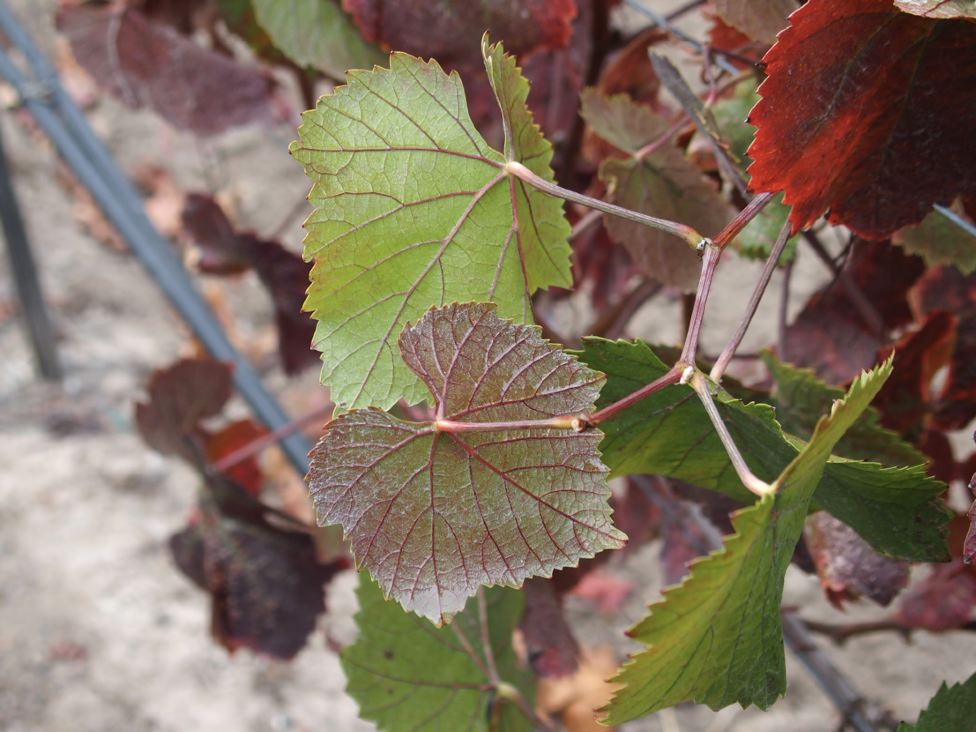 Bruce Cakebread is one of the few vintners to speak out about Grapevine Red Blotch Virus (GRBaV). At a tasting in London in 2017, he told db - https://www.thedrinksbusiness.com/2017/02/red-blotch-like-phylloxerafor- california/ - that he had pulled out 22 acres of Cakebread vineyards due to the virus and noted that many vineyards were being ripped up and being replanted with virus-free vines. The wine industry is naturally reluctant to speak openly about the virus infestation for fear of consumer perception that the virus infestation affects the quality of wine produced. Simply, wineries do not want consumers to think there is a major problem. I wrote previously about red blotch in the PinotFile, www.princeofpinot.com/article/1743/, and in the Oregon Wine Press, www.oregonwinepress.com/beating-red-blotch. This article provides updated information and an interested consumer’s timeline and summary. The photo above shows red blotch in a Pinot Noir vine in the Russian River Valley.
TIMELINE2008: Viticulturist Jim Wolper and Viticulture Researcher Mike Anderson, both of UC Davis, first discovered the disease at the UC Davis Oakville Station Experimental Vineyard in Napa Valley in Cabernet Sauvignon vines planted in 2001. The vines exhibited leaf changes resembling those caused by leafroll-associated virus (GLRaV), lower Brix, and delayed harvest, but the vines tested negative for the leafroll virus. The Red Blotch virus was in 46% of the vines. October 7-12, 2012: The Red Blotch virus was first reported to the scientific community at the 17th Congress of the International Council for the Study of Virus and Virus-Like Disease of the Grapevine (ICVG) held at Davis, California by researchers at both UC Davis and Cornell University who had been working independently and concurrently. It was agreed at ICVG to refer to the virus as the “Grapevine Red Blotch associated Virus or GRBaV. This plant virus is a member of the genus Grablovirus of the family Geminiviridae. . October 2012: The complete genome sequence of the Red Blotch virus was achieved soon after GRBaV was reported at the ICVG. A DNA-based polymerase chain reaction (PCR) assay was developed in cooperation with Marc Fuchs, a plant pathologist at Cornell University and Eurofins STA Laboratories. The test detects GRBaV in any tissue of the vine, including leaf blades, petioles, clusters, green or dormant canes, cordons and trunks during any season. The virus is discoverable before the onset of symptoms in the affected grapevine.
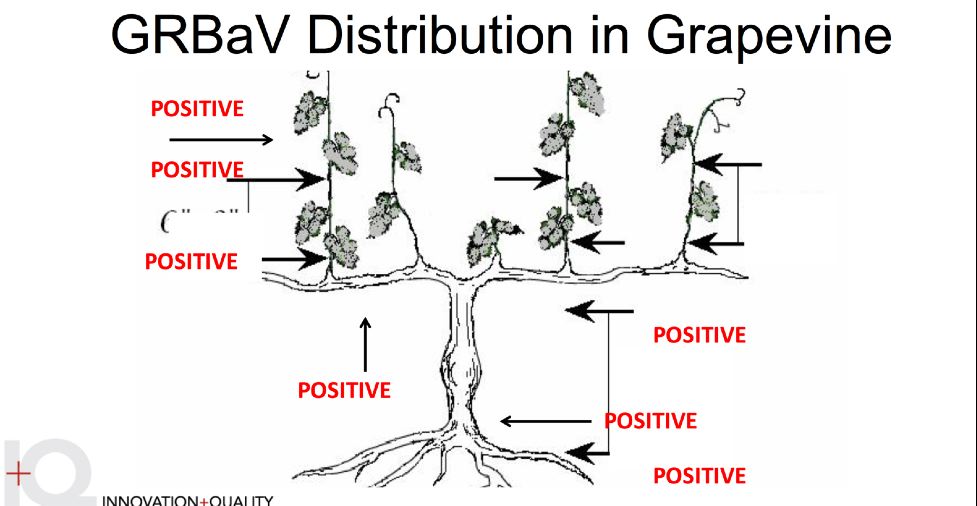 2013: Dr. Mysore Sudarshana, a plant pathologist with the USDA Agricultural Research Service at UC Davis and Maher Al Rwahnih, a researcher at UC Davis Foundation Plant Services (FPS) published the first report of the GRBaV virus associated with Red Blotch disease in Cabernet Franc, Cabernet Sauvignon and Zinfandel grapevines in California. They used the PCR assay on grapevines that exhibited foliar signs of red blotches and red veins accompanied by reduced Brix in the grapes at harvest. 2013: The Grapevine Foundation Block at Russell Ranch at UC Davis FPS was tested and was found to be completely free of GRBaV. This vineyard is the primary source of wood for certified nurseries in the future. GRBaV was found to have a low incidence (less than 1%) at the FPS Classic Foundation Vineyard. 2013: Dr. Mark Fuchs, a plant virologist at Cornell University, reported in a webinar that the red blotch virus was spread by grafting and propagation and possibly the Virginia creeper leafhopper that was identified in greenhouse experiments but not in the field. This vector was never confirmed by subsequent studies. Fuchs noted that grapes from vines infected with the virus had lower Brix, reduced color and delayed ripening. He recommended removing individually infected vines or replace the entire vineyard if more than 25% of the vines are infected. 2014: The red blotch virus was found to be widely distributed in vineyards in California, Maryland, New York, New Jersey, Oregon, Pennsylvania, Virginia and Washington, and reported in vineyards in Arizona, Arkansas, Georgia, Idaho, North Carolina, Texas and Canada. 15 to 20 vineyards were infected in Oregon by early 2014, and the virus was reported as spreading at an undetermined rate in Southern Oregon. So far, GRBaV has only been detected in Europe in Switzerland and the origin of the plants was California. Since the Swiss performed a large survey and did not find the virus elsewhere, GRBaV is considered a quarantine pathogen and the few infected plants were removed from the virus collection and destroyed. 2015: Anita Oberholster, a researcher in the Department of Viticulture and Enology at UC Davis, presented her findings on how GRBaV can limit grape development and affect wine made with grapes from virus-positive vines. Brix levels are consistently lower, and bottled wines made with grapes from GRBaV-positive vines showed reduced fruit character, “artificial fruit” flavors, and a thinner mouthfeel marked by green tannins. 2015: M. Al Rwahnih, A. Rowhani and De. Golino from UC Davis analyzed specimens originally collected by Professor Harold Olmo at UC Davis between 1937 and 1950. The study suggested that GRBaV was present in California vineyards (at least where specimens were taken) 78 years ago. 2015: Dr Mark Fuchs and colleagues at Cornell University reported at the 18th ICVG that through agroinoculation experiments they had confirmed Koch’s postulates and the hypothesis that GRBaV was the causal agent of red blotch disease.
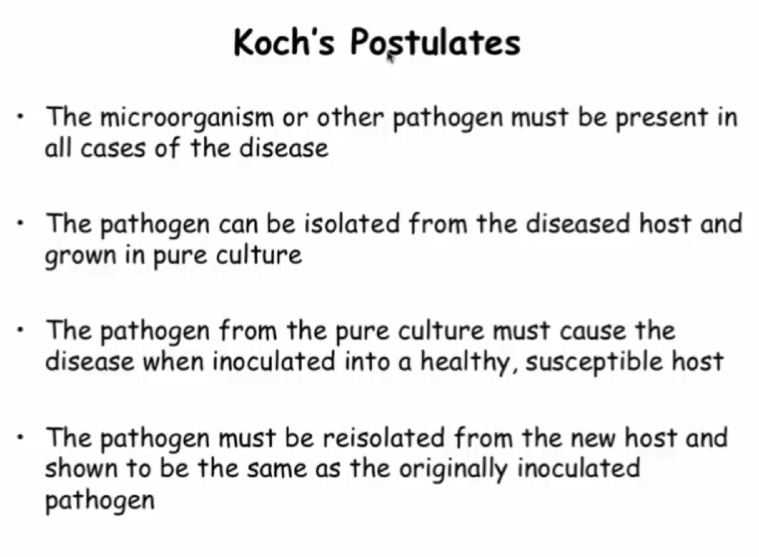 2015: Dr. Mysore Sudarshana reported that the symptoms of red blotch disease in red-berried grapevine cultivars such as Pinot Noir first appear in June to July in the Northern Hemisphere as irregular blotches on older leaf blades on the basal portions of shoots. The blotches can expand and coalesce across most of the leaf blade and progressively move toward the top of the canopy late in the season (August to October in the Northern Hemisphere). Affected leaves may drop off prematurely. There are variations in reddening depending on the cultivar and rootstock. GRBaV in Pinot Noir is pictured below. The changes resemble leafroll disease due to GLRaV, but the leaf margins in GRBaV-infected wines do not roll downward, and the leaf veins in red blotch turn partly or fully red while leafroll-infected vines exhibit green veins. A comparison of red blotch and leafroll is pictured below. Also, a typical example of GRBaV is pictured. The effects of GRBaV are much more devastating than leafroll.
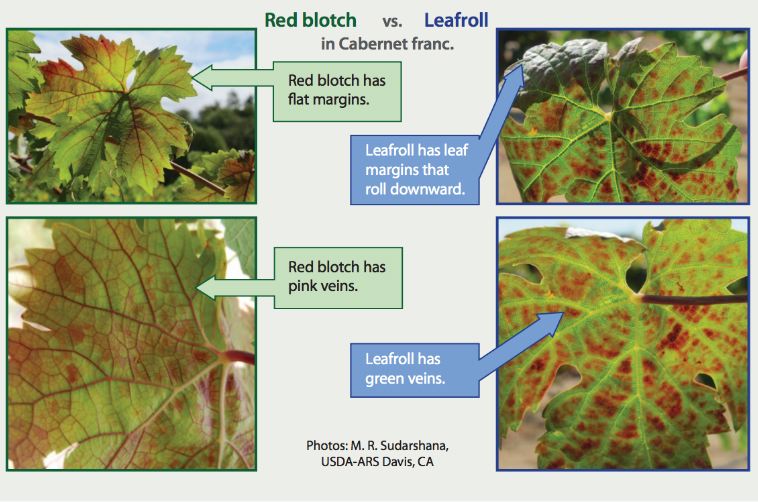
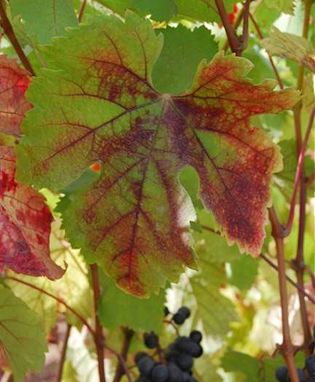
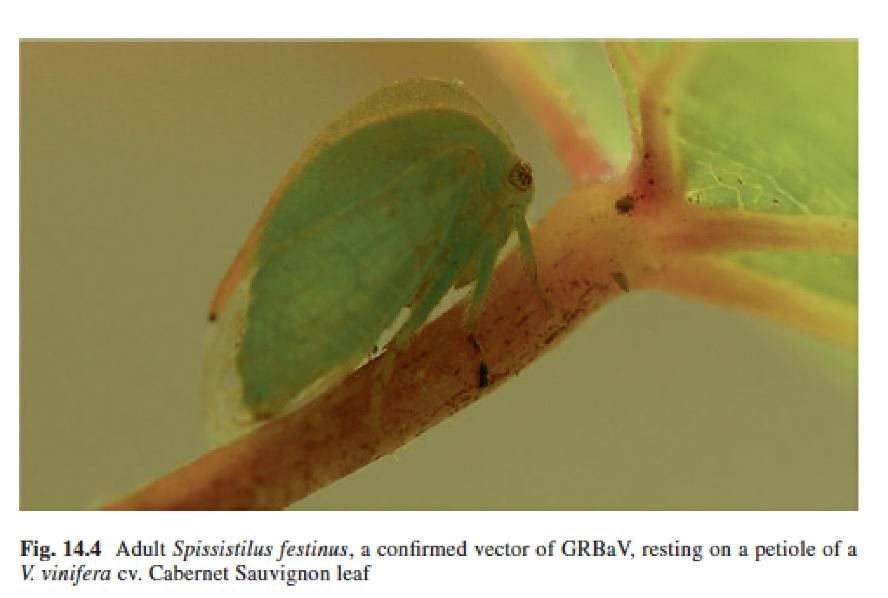 2016: It is reported that there is no cure for a vine infected with GRBaV. If there are a few symptomatic vines (<25%-30%), it is recommended that the vines be removed during the dormant season when insect activity is very low or absent and replanted with clean vines. If more than 30% of vines are diseased, then the entire vineyard should be removed. Some recommend that the ground be left fallow for 2 years before replanting. Prevention includes planting certified vines from virus-tested, clean stocks. Michael Anderson at UC Davis spoke to the spread of the virus, saying, “The most important issue concerning red blotch is understanding the mechanism(s) of vine-to-vine spread. It is one thing to do everything you can to ensure clean planting material, but it is quite another to keep it that way.” 2016: Steve Dutton, noted wine grower in Sonoma County, reported that a young Chardonnay vineyard developed red blotch five years after the vines were planted and the entire vineyard had to be replaced. The grapes would not ripen above 22º Brix. 2016: A study by a research team headed by Vaughn Walton of Oregon State University, found 29.79% of 356 vines tested positive for GRBaV in Southern Oregon in 2016, and 4.19% of 406 sampled vines tested positive in the Willamette Valley. Spread in the Willamette Valley was quite variable. Leafhoppers were commonly found in the vineyards tested. The increased incidence in young healthy vines adjacent to infected vineyards suggested vector transmission. 2016: Bob Martin, of the USDA-ARS in Corvallis, Oregon reported that the virus had been discovered in all wine-producing areas of Oregon in vineyards 2 to 35 years of age. Cultivars testing positive included Barbera, Cabernet Sauvignon, Cabernet Franc, Grenache, Malbec, Merlot, Pinot Noir, Syrah, Tempranillo, Chardonnay, Muscat, Pinot Gris, Roussanne and Viognier. 2016: The spread of red blotch in the field is acknowledged by many researchers and confirmed by PCR assay data. The spread patterns reflect a vector. GRBaV has been discovered in wild grapevines. 2016: A panel moderated by Jim Barbour, viticulturist and owner of Barbour Vineyards, discussed “Effects of Red Blotch on Wine Quality.” A Knight’s Valley Vineyard was planted in 2004-2006. The first symptoms of red blotch appeared in 50 vines in 2010. It had spread to 4,000 vines by 2011. The affected vines tested positive for red blotch once the test was developed. 2016: Rebekah Wineburg, winemaker at Quintessa, reported on “Effects of Red Blotch on Wine Quality.” Red blotch was identified in a Cabernet Sauvignon block planted in 2009 with symptoms first observed in 2011. The vines were removed post-harvest 2015. Harvest chemistry:
 2016: Agdia, Inc. in Elkhart, Indiana commercialized a rapid and user-friendly DNA test kit for detecting GRBaV in grapevines. The test is much faster than other methods and is usually completed in 45 minutes or less including the sample extraction step. Agdia claims the test is at least ten to one hundred times more sensitive than laboratory-based PCR methods but can be completed in a fraction of the time by nonexperienced users. 2016: In-field diagnostics are in development as the virus can be hard to detect by visual means. Grapevines may have multiple viruses at the same time, including leafroll virus, that produce other symptoms. Confounding the diagnosis is the finding that vines can test positive by DNA-based assay for the virus but have no symptoms or symptoms may appear in one vintage and not another. 2017: Scientists at UC Davis report that GRBaV infections disrupt normal berry development and stress responses by altering transcription factors and hormone networks, resulting in the inhibition of ripening pathways involved in the generation of color, flavor and aroma compounds. The result is Brix reduction by up to 6º, decreased berry weight, reduced grape color, delayed ripening, and diminished yields. Wines made from diseased vines can show reduced pH and elevated TA, and disturbed phenolics and tannins compared to wines from non-diseased vines. In essence, once a grapevine is infected and symptoms appear, the grapevine may not produce commercially useful grapes. 2017: Marc Fuchs in Growing Produce - https://www.growingproduce.com/fruits/grapes/understanding-theeconomics- of-red-blotch-in-grapes/ - re-emphasized there is no cure for red blotch. “Once a vine is infected with red blotch, it remains infected with red blotch until it dies.” The problem is, he pointed out, “It doesn’t kill the vine, so growers are still making a crop but very often they are not aware of how much money they’re losing and how poor the crops is. We underestimate incidents and impacts that this disease and virus has on the industry (see below) Fuchs believes the economic threshold between removing infected vines or an entire vineyard was 30%. He cautioned that growers be very choosy when planting new vines and make sure the new vines and rootstock have been virus tested and are clean material.
 April 2017: Dr. Vaughn Walton, Professor and Horticultural Entomologist in the Oregon State University Department of Horticulture had a presentation at the 2018 Oregon Grape Day held by the Oregon Wine Research Institute at Oregon State University titled “Red Blotch in Oregon.” During 2016, he found three potential virus vector insects in Oregon vineyards. The treehopper Spissistilus festinuswas found in Southern Oregon and recorded in all production regions throughout Oregon during the last 100 years (data from OSU insect collection). He additionally found the treehopper species Tortistilus wickhami and Tortistilus albidosparsus in Oregon vineyards. The former was found predominantly in Southern Oregon while the latter was predominantly found in the Willamette Valley. All suspected vector insect species were consistently found in vineyards where GRBaV spread year over year. The spread of GRBaV is alarming, with observed doubling and 10X increases in study sites from 2014-2016. Treehoppers are believed to be the most like species moving red blotch between vines. The patterns of virus spread within vineyards closely link feeding symptoms of treehoppers. GRBaV-infected plants are concentrated and spread from the edge of the sampled vineyard blocks. Virus transmission biology work is currently ongoing in greenhouse trials. Another presentation by Dr. Anita Oberholster et al of UC Davis Cooperative Extension titled “Impact of Red Blotch Disease on Grape and Wine Composition,” was based on research in Sonoma County vineyards from 2014 to 2016. She concluded that the impact of red blotch was not variety but site specific with significant seasonal effect. The differences in sugar concentration at harvest resulted in significantly higher alcohol concentrations in wines made from fruit from healthy/asymptomatic vines compared to symptomatic vines, which strongly affected sensory properties. December 2017: Deborah Golino, Director of FPS at UC Davis, reported that GRBaV had been found in the Russell Ranch Vineyard. All of the five of 4,132 vines that tested positive for GRBaV were removed and destroyed. This is the first time that the virus has been detected since testing began in 2013. All mother vines and vines related to GRBaV positives tested negative in every case, indicating that this is a field transmission of GRBaV. The one vine that tested positive in the Classic Foundation Vineyard was removed. FPS plans to be more vigilant and additional precautions are being undertaken to prevent spread of this viral disease. The complete details are at http://fps.ucdavis.edu/newsarticle.cfm?newsid=19. March 2018: The red blotch virus was found in Calaveras County. This followed recent findings of the virus in El Dorado and Amador county vineyards. April 2018: The Proceedings of the 19th Congress of ICVG, Santiago, Chile, revealed the following. Keith Perry and Marc Fuchs studied the spread of GRBaV over a four year period (2014-2017) in a Cabernet Franc vineyard in California a Merlot vineyard in New York. The findings of spread in the California vineyard revealed S. festinus as a vector for GRBaV and suggested further testing of other possible vectors. May 2018: The California Department of Food and Agriculture approved $3.4 million in funding for research focused on grapevine viruses. The research will include the role of treehoppers in relation to red blotch disease and the seasonal ecology and transmission efficiency of insect vectors such as the three-cornered alfalfa hopper. 2018: Vintner Merry Edwards said in an interview that the Mt Eden clone is resistant to leafroll and red blotch virus. She stated, “There is a lot of the material we have today that has failed with red blotch. A lot of the imported clones, the Dijon series clones, a lot are infected. It’s very hard to find something clean to plant today, but I have my own little miracle. The fact that the Mt Eden clone would be resistant to red blotch is just amazing to me and I guess it’s my gift from the universe to Merry.” 2018 I talked with Glenn Alexander, who until this year owned Atlas Vineyard Management, a large vineyard farming (1600 acres) and vineyard development company based in Napa, California. He has observed red blotch in multiple vineyards in Sonoma County, primarily in vineyards planted in the late 1990s and early 2000s. The worst infestation he has seen is in Petite Sirah and Syrah, with Pinot Noir less widely affected and Chardonnay rarely infected with red blotch virus. The virus has been seen in fewer recently planted vineyards because of third party certification by nursery sources. In some vineyards, he "can live with it awhile" and has seen some vineyard grapes used for sparkling wine if the vineyard owner cannot afford to replant. He does not believe that red blotch is spread by pruning.
SUMMARY* Grapes are one of most heavily virused crops in the world with 84 known RNA and DNA viruses in 32 genera identified worldwide. * Grapevine red blotch-associated virus (GRBaV) is a viral disease first recognized in 2008, but present in California vineyards for over 70 years. The virus has also been reported in wine and table grape varieties in many United States growing regions, Canada and European countries. It infects every part of the grapevine. * The virus has been spread within nursery stocks over the past few decades that were ignorant of the threat and among existing vineyards by vector leading to its current emerging prevalence. Most certified rootstock was not tested for red blotch until recently. Dissemination occurred in the wine regions without suspected vector by taking wood off of infected vines. * There is speculation that the there is a latency of about 2 years between infection with the virus and symptoms. The same vine may show symptoms at some times of the year and not at others or may vary with weather conditions (ie more prevalent in drought) or may appear infected one season and not the next. * The most likely vector is the three-cornered alfalfa treehopper, but researchers are still in the early stages of fully understanding details of the spread of the virus. The treehopper has been found in the San Joaquin Valley that is home to some nurseries that supply grapevines. * It is thought that GRBaV is graft and cane transmissible, but probably not spread by root grafting or pruning. * The spread of the GRBaV virus is more evident in riparian areas and irrigation reservoirs in or close to vineyards. The epidemiology of GRBaV remains elusive. * The result of GRBaV infestation is smaller berry size, delayed ripening, reduced Brix, lower pH, increased TA, lower yields and ultimately significant reduction in the quality of the wine. * No cure for the virus has been discovered or developed. Once a vine is infected with red blotch or other virus in grapes, there is no cure. * Growers are advised to avoid planting or replanting vines in close proximity to vineyards that have tested positive for GRBaV and that have insect vectors. If blocks in an established vineyard test positive for the virus, it is recommended not to use that bud wood for propagation. * Growers are recommended to walk the vineyard from bud break through senescence, mark plants and create a pattern. If red blotch is suspected, test and look for patterns (patterns mean spread). Vintners should look for diseased vines in the fall and test them along with healthy-looking vines in the same block since the vines likely came from the same source material. If there is a mix of healthy and infected vines and there is less than 20 percent (others set limit at 30%) of the vineyard infected, then rogue vines may be removed. Otherwise, all vines must be removed. Approach replanting with caution. * The future of red blotch prevention and other grapevine virus diseases may involve developing disease-resistant grape varieties including genetically modified grapevines. Ted Lemon, the proprietor and winemaker of Littorai in the Sonoma Coast has a different slant. He says, “From a viticultural point of view, most of our leading researchers and government agencies take the approach of somehow trying to ‘guarantee’ that plant material will be virus free. They have been singing this siren song for decades. Our plant material has never been virus free. It is cleaner than ever, but not virus free. Our goal for people and plants ought not to try to make them virus and disease free, but to create vibrant, healthy ecosystems where balance prevents disease associated with virus expression. In the case of humans, the moral question pushes us to try to insure that no one suffers from virus-induced disease and we err on the side of too much medicine. In the plant world, we can more easily accept the risk that a percentage of plants fail if this create better health in the overall population.”
Pinot BriefsSecuring Recognition for Smaller Producers The Napa Valley Register reported recently that The Scale Wine Group has been launched to assist small wine producers to gain more widespread recognition in the United States. This organization is unique in that it includes several prominent wine sommeliers. It is well known that making wine is relatively easy compared to selling it without a distributor. The reality is that most small wineries cannot sell all their wine through direct-to-consumer channels, especially if their wines are in the $50 and up range and do not receive scores in the mid to high 90’s. The Scale Wine Group attempts to provide credibility in the vast marketplace. Currently, the focus of the Group is Napa Valley wineries. Visit https:// napavalleyregister.com/wine/napa-s-scale-wine-group-finds-a-new-balance-for/article_5bf416ad-bb31-5e90- be97-3280a075a5f4.html. Monoclonal Viticulture versus Interwoven Clonal Planting Katherine Cole penned a very good article in SevenFiftyDaily about “Overturning the Monoclonal Status Quo”: https://daily.sevenfifty.com/ overturning-the-monoclonal-status-quo/. More winegrowers are interplanting many clones to create genetic diversity in a vineyard. Traditionally in the U.S., winegrowers have planted single clones in blocks, harvested the clones separated, often fermented them separately, and then combined them to arrive at the most desirable blend in the finished wine. Some winegrowers now believe that planting and co-fermenting a variety of clones (either in the same row or in alternating rows) together produces more complex wines that more truly reflect the terroir of the site. This is not a new concept and a number of domestic winegrowers (Mount Eden and Rhys Vineyards in the Santa Cruz Mountains, Williams Selyem Estate Vineyard in the Russian River Valley, for example) have practiced this interplanting that resembles Burgundy’s massale selection where cuttings are taken from the best vines to plant new vines regardless of clonal type. Claude Koberle, a native of Burgundy and co-owner of Soliste, a producer of monoclonal Sonoma Coast Pinot Noir, is a strong proponent of monoclonal viticulture and wines. He says, “The clone is most important and terroir is the secondary expression of the clone. Selection massale was a residue or knee-jerk reaction of the phylloxera infestation that affected European vineyards that started in 1850. Since the wine industry in France is the largest industry in that country and because they did not understand that phylloxera was a subterranean louse attacking the roots of vines, vintners in a panic thought that the issue was the vines and they started grafting and re-cloning in an effort to cure the infestation and preserve the quality of wines. They then argued that selection massale created more complete wines by blending, but actually, in my opinion, this creates wines of less identify and focus. The French simply had no choice and they needed a new marketing platform to answer for the adaptation of the phylloxera era. (That is why the French don’t talk about clones today). End of story.” Pinot Celebration Australia 2019 Announced Australia’s preeminent Pinot Noir event, Pinot Celebration Australia will take place February 8-9, 2019 at the brand new RACV Cape Schanck Resort on the Mornington Peninsula. Formerly known as the Mornington Peninsula International Pinot Noir Celebration, Pinot Celebration Australia is a biennial event celebrating Australian Pinot Noir, hosted by the Mornington Peninsula Vignerons Association. The event features two days of panel discussions, structured and walk around tastings, winery visits, one-off events and meals prepared by esteemed Mornington Peninsula chefs. Guests have the opportunity to taste over 100 Pinot Noirs and to meet and convene with winemakers and industry leaders. For tickets and more information, visit www.pinotcelebration.com.au.
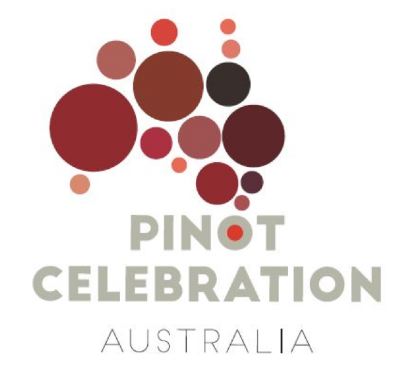 Los Angeles Rosé & Bubbles Festival 2018 WineLA presents its 2nd annual Los Angeles Rosé & Bubbles Festival on Saturday, August 25 at Leica Store & Gallery. Unlimited tastings, gourmet hors-d'oeuvres, a silent auction of collectable and large format wines and music. Advanced tickets are $69 per person. A limited number of VIP admission tickets include a VIP dinner with special rosé and champagne producers for a “reserve cuvée” session. For more information and tickets, visit www.winela.com/rose-bubbles-festival. vSpin Wine Aerator An innovative wine aerator based on a sophisticated active decanting system is now available. The device uses technology to aerate wine in 5 minutes, combining vortex wine aeration into a sophisticated active decanting system. A 2-hour decant is possible in just 5 minutes by accelerating oxygenation that creates a silent wine vortex to increase the surface area of wine in a controlled manner. The product retails in the U.S. and Canada at Amazon and www.vSpin.com. The MSRP is $250. Long Meadow Ranch Opens New Tasting Room in Anderson Valley The winery’s new tasting room is located at The Madrones, a boutique resort on Highway 128 in Philo. Long Meadow Ranch’s tasting room joins tasting rooms at The Madrones for Drew Family Cellars and Smith-Story Winery. Long Meadow Ranch Anderson Valley Estate wines will be featured from the winery’s 69-acres of estate vineyards in the Anderson Valley planted with Chardonnay, Pinot Gris and Pinot Noir. Established in 1989, Long Meadow Ranch and the Hall family now operate an organic, sustainable and integrated farming system that encompasses over 2,000 acres of land in Northern California. For more information, visit www.longmeadowranch.com/eat-drink/anderson-valley-tasting-room. Winesong 2018 Charity Auction & Tasting Tickets are still on sale for the 34th Annual Winesong, a weekend of wine, food, fine art, music, merriment and charitable giving. Produced by the Mendocino Coast Hospital Foundation, the main event - featuring a grand food and wine tasting and a live and silent auction - takes place at the Mendocino Coast Botanical Gardens on September 8-9. The nearby Little River Inn will host “A Pinot Noir Celebration,” showcasing premier wineries from Anderson Valley and other renowned Pinot Noir producing regions. Dan Duckhorn will be the Honored Vintner. Proceeds from both events go towards supporting the local Mendocino Coast District Hospital. For more information and tickets, visit www.winesong.org. Documentary on Struggles to Succeed by Minority Winemakers in Oregon A new film, “Red, White & Black,” chronicles the struggles and successes of Oregon’s minority winemakers. Directed by Jerry Bell Jr., an award-winning filmmaker and actor, this frank documentary reveals the obstacles that Oregon’s minority winemakers face. For trailer and screenings, visit www.redwhite-black.com.
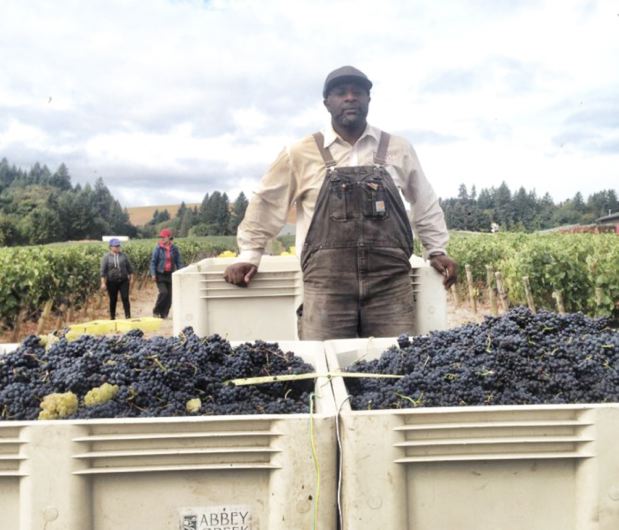 Bob Cabral Wines After making wine since the 1970s, Bob Cabral is returning to the grassroots approach that got him excited about winemaking in the first place. Proprietary names are used for each wine, with each of the names having a personal meaning and significance. There are subtle elements of Bob's fascination with old concert posters in the label art. The inaugural releases were from the 2015 vintage. The wines are sold exclusively through a mailing list at www.bobcabralwines.com.
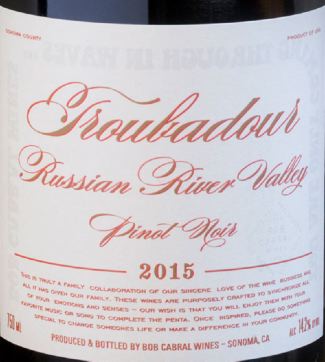 |